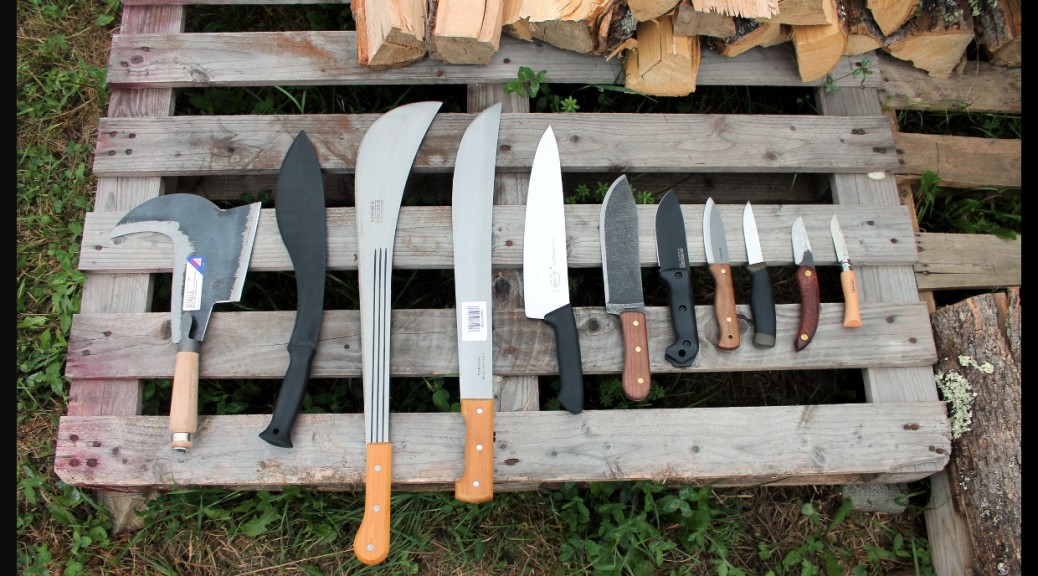When analyzing knife and tool designs there are a wide range of approaches that can be used to develop an understanding of a particular tool’s ideal applications. One of these methods that I’m fond of using when initially sizing up a tool is the line test method. Imagining a superimposed straight line over various points of the tool’s outline is a quick and easy method for establishing rough concepts of tool clearance in use. That is to say, it helps you get an idea of how much space your hand will have in use, what regions of the blade will be making contact at what orientations relative to the target, and if any regions of the blade would be prevented from cutting against a broad flat surface. For instance, if you were cutting atop a chopping block of some kind, many forward curving blades would need to be chopping on a block of a certain height and width in order to deliver a blow along the interior of the blade’s arch without the hand striking the ground. To demonstrate this method, observe the differences between the following lineup when the test is applied.
To begin with, we’ll start the the most basic test–seeing what a line looks like describing a “table” surface, and what the tool would look like laying against it with one point of contact somewhere on the blade and one somewhere on the handle. This is the same as placing the tip of the blade on a table surface and rolling it back until the handle contacted it.
The line test can also be used to assess things like what part of the blade will be in contact with a surface when held at a given angle to it. This is often useful when considering specific task applications where the target will have a certain spacial relationship to the user. I often think of it in terms of if the target will be sitting above or below the elbow, and by how much. The following images show one example of the line test being used to approximate the angle at which the tip contacts the plane surface. However, if you have a particular set of tasks in mind for a knife, imagine the plane formed by a “line of best fit” by your targets and try using the line test at those angles to see if an appropriate region of the blade is being contacted.

























